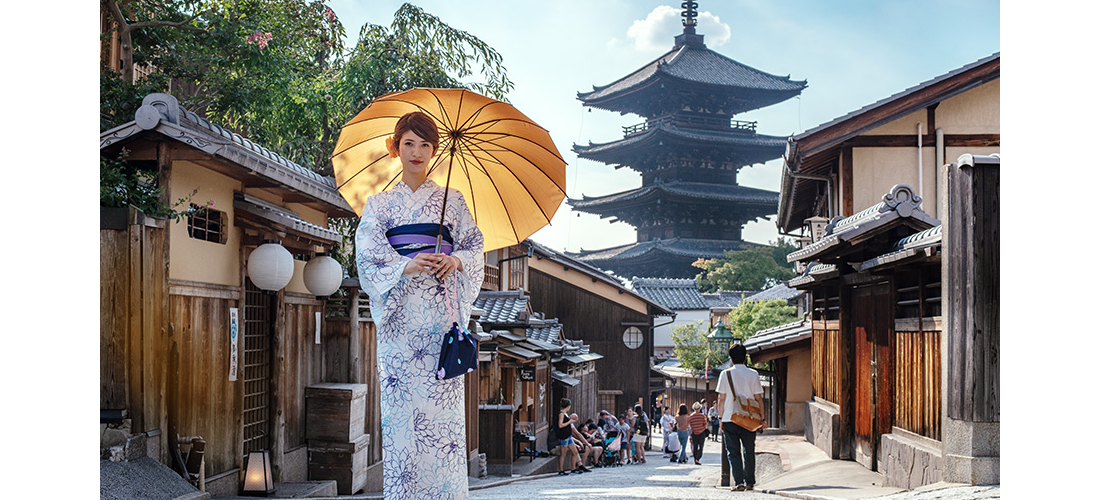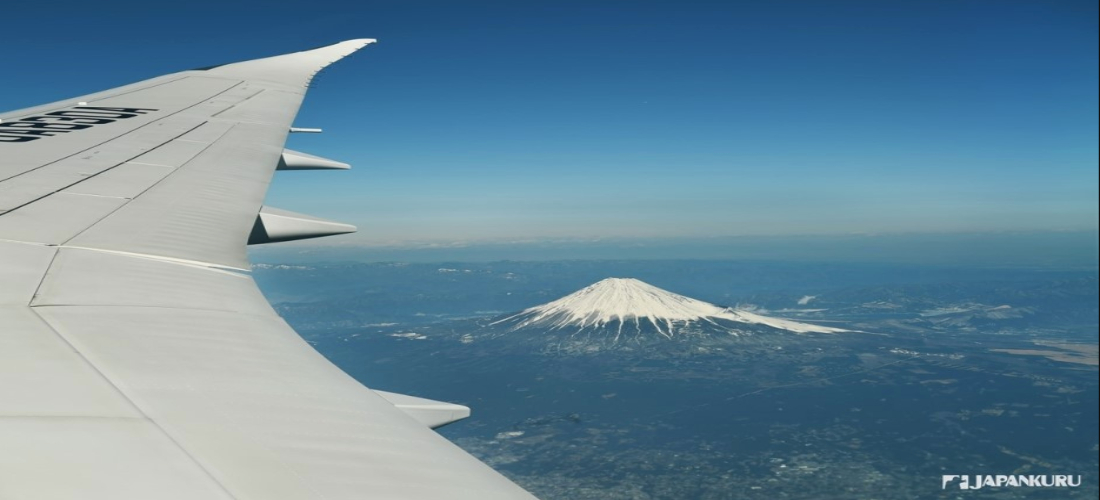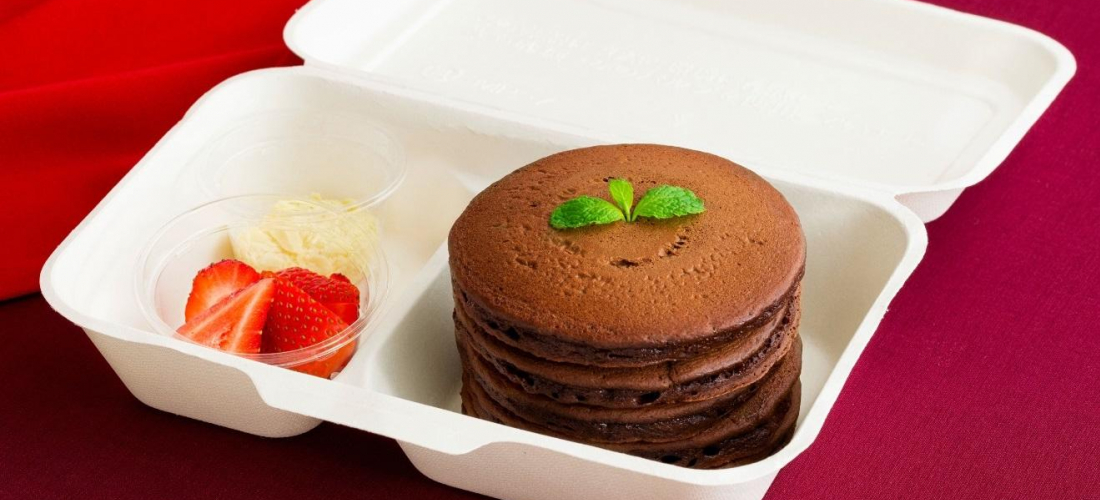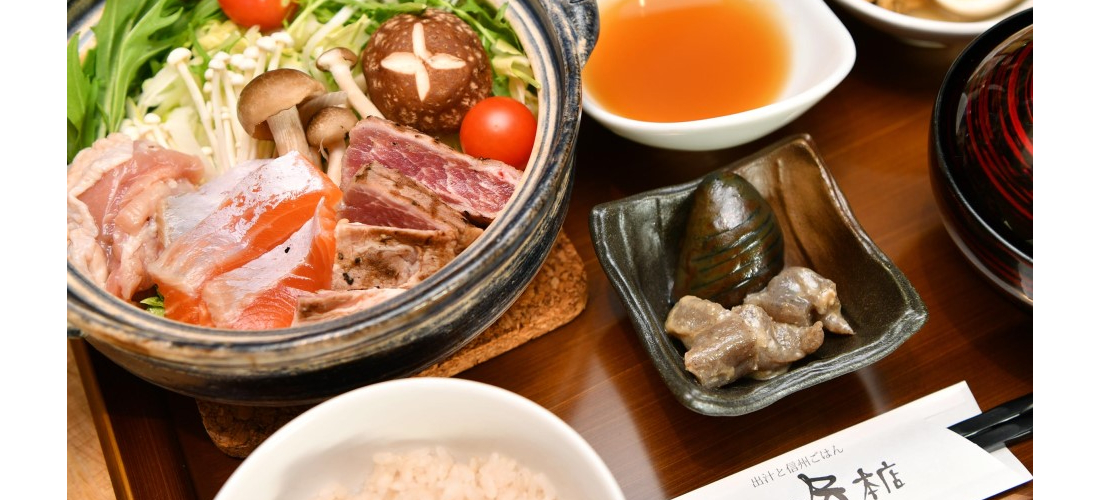Are you spending a week in Tokyo this year? Or maybe 2019 is the year of Osaka? Perhaps a few days in Fukuoka, a weekend in Okinawa, or a trip to Hokkaido? All of these places are a little different, but there are a few things you’ll definitely want to bring (or get ready for) no matter where in Japan you’re heading. So today we’re bringing you a basic list of things not to forget, so you can finish all your travel prep worry-free!
Traveling in Japan: The Basics
Never been to this part of the world before? Don't know what to bring to Japan? In the English-speaking world, it's not uncommon to worry about how different Japan might be from your home country, and packing for the unexpected is difficult! But we've put together a simple travel prep list, with a few obvious items and a few things you might not have thought of, so everything from the moment you board the plane to your last day in Japan will be smooth sailing. Happy travels!
1. A Suitcase/Backpack + An Everyday Bag
These days it's trendy to travel light and only bring carry-on bags, but if you're planning to check a suitcase, don't forget to mark it with a nametag (or something cute like a ribbon). If you've got a simple black suitcase… well, so does everyone else. Do something to make it instantly recognizable on the luggage carousel and you'll thank yourself later.
Heading through the airport, and then the streets of Tokyo, you're not going to want to rely solely on your pockets though! Bring a small or medium-sized bag with you to carry things like your phone and wallet every day, plus the handful of things we mention later in this list. In Japan we recommend you also bring your passport around with you! Pickpocketing, mugging, and other petty theft is really very rare (people frequently reserve seats at cafes with their purse, or even leave their cellphone on the table), and your foreign passport can give you discounts on tickets sometimes. (Foreign visitors can go to Niigata's APALLUSION light show for free in 2019!) Do be careful not to lose it yourself, though!
2. A Pen/Pencil + A Small Notebook
You'll be handed customs and immigration forms while you're onboard the plane over. If you're able to just grab a pen from your everyday bag and fill it in while you're sitting in your seat, it's significantly easier than trying to ask a flight attendant for a pen or (the worst) struggling with all your documents and filling the form out at a table in front of immigration before you get in line. Plus, if you have a little notebook with you, you can use it to jot down any information you need for your plans during the trip, without worrying about wifi or your phone battery.
3. Your Passport!
As we mentioned above, it's easiest to just bring your passport with you, and keep it in a secure place so it doesn't fall out of your bag or anything. You'll need it for certain discounts (like free sunflower viewing), and you can use it to buy lots of things duty-free in Japan. Bigger stores will often have tax-exempt counters, where you can show your passport for the discount. It's always a good idea to make a couple copies of your passport, and perhaps other ID as well, and spread them throughout your luggage before you go (just in case).
4. Tickets + Hotel Reservation Information
These days, a flash of your phone screen will often give hotels and airports all the information they need to check you in and get you going, but there are inherent risks that come with relying on that method. Check ahead of time and print out any info you'll need before you get settled in Japan. Something like a printed hotel reservation comes in handy when you least expect it, like when you realize you need to write the address on your immigration form!
5. Cash, Cards, and a Plan
The world increasingly relies on credit and debit cards for all kinds of payment, and Japan isn't excluded from that… but the country is really a little behind! Cash is still king, and even though many shops do accept cards these days, you'll still see most people paying in cash. If you'd still prefer to use your credit card in Japan when you can, go for it, but make sure you have some cash on you as well for any delicious little hole in the wall restaurants you find. (And don't forget to let your card company know in advance that you'll be traveling! We don't want any mix-ups to cause money emergencies during your trip.) The worst place to exchange cash is the airport, so either get a good rate at your bank at home, or go the simple route and use your card to withdraw cash from ATMs in Japan (you might be charged a fee to do this, but it's often still the best deal.) Some convenience stores, especially 7/11s, have ATMs that accept international cards, and all Japan Post Bank ATMS are fine too!
One more tip: Japan uses a lot of coins, and if you're not used to carefully using them every single time you make a purchase, they're going to build up. Bring a coin purse, or buy a cute one in Japan!
6. Pocket Wifi
Before you go, think about how much you want to use your phone (or other devices) during your travels. In recent years free wifi has popped up in some of Tokyo's public areas, and it's common at cafes, but Japan is not quite the tech wonderland we dream of, and you shouldn't rely on free wifi being anywhere in particular. Which is why, if you're a big instagram user or you rely on google throughout the day, we recommend you grab a pocket wifi device on your way into Japan. You can make reservations in advance, and then just pick up your wifi device at a counter in the airport. This can be pretty reasonable, especially if you split the costs between a few people. We would not suggest using the international roaming provided by your cellphone service provider – it's almost certainly obscenely expensive (so make sure that isn't turned on when you arrive!)
7. Cellphone Essentials
Speaking of using pocket wifi, don't forget a mobile battery! If you're using the internet throughout the day, you'll need to keep that phone charged. Make sure you also have a normal charger with you, of course, and bring earphones for that plane ride!
8. Transportation Passes + Tourist Tickets
There are tickets for all sorts of things in Japan that are only discounted for foreign travelers, and plenty of tickets that should be reserved in advance. For some of these, it can be easier to purchase them before you even leave. Are you going to be taking a lot of Japan Rail trains during your trip? If you want to use the shinkansen (bullet train) to move between cities, a JR Rail Pass can be really cost-effective. If you want to go somewhere very popular like Tokyo Disneyland, Teamlab, the Yayoi Kusama Museum, or the Ghibli Museum, you'll definitely want advance tickets!
9. Offline Google Maps
Going to skip the pocket wifi during your trip? Or maybe you just want to save on data when you can? Well, Google Maps has an "offline map" feature, where you can save the data for a selected area to your phone for offline use. This can be a lifesaver if you get lost in the alleys of Tokyo, so take advantage of it and download the areas you're going to visit before you go!
10. An International Drivers License/Student ID
The most important ID to have with you will always be your passport, but these others can be helpful for different things. Road trips in Japan are increasingly trendy these days, since they're a pretty fun way to get off the beaten path and see some unusual parts of the country, and an international license will have you set to rent a car when you get here. Tokyo, Osaka, and Kyoto are great, of course, but it can be great to venture out into Japan's beautiful countryside, and a car gives you the freedom to do that.
Student IDs are definitely worth bringing for student discounts. Museums, movie theaters, etc. etc. will often have student tickets, which can even be valid for university students, so don't pay more if you don't need to!
11. Emergency Supplies
Last but not least, "emergency supplies" might be a bit of a dramatic way to put it, but on top of toothbrushes and so on, it's not a bad idea to pack a couple of bandaids. A trip to Japan will generally have you on your feet all day every day, with lots of walking, so wear comfortable shoes and bring supplies to deal with blisters! If you're a person who gets periods, check your cycle and prepare accordingly! Pad and tampon options in Japan aren't exactly the same as other countries, so you might want to bring those with you. Don't worry too much about an upset stomach, though. It's not uncommon during travel, but you can easily bring medicine with you or just check out the Japanese version.
____________________________________________
Clearly this list doesn't include the obvious, like clothing and toiletry basics, but we think a quick run-through will help make your trip fun and worry-free! Was it helpful for you? Is there anything you think we're missing? Let us know on our facebook, twitter, or instagram!
If you need more help planning your trip to Japan, here are a few articles you might find particularly helpful.
Japan Travel Tips for Beginners: Essential Things to Know Before Visiting Japan
Tips and Tricks for Driving Around Japan
Buy Souvenirs in Japan Like a Local
The Perfect Destination for Every Season: Monthly Suggestions for Your Trip to Japan
Going to a Japanese Hot Springs with Tattoos ♨ Finding Tattoo Friendly Onsen in Japan
Special Deals For Domestic Flights Within Japan For Overseas Tourists
Details
NAME:All Over Japan
PROFILE
Food, fun, and everyday life for an international student in Tokyo! Stay tuned for tips on living in Japan :-)
COMMENT
FEATURED MEDIA
VIEW MORE
・Accommodations for Odaiba Sightseers: Mitsui Garden Hotel Toyosu PREMIER ・住宿推薦 三井花園飯店 豐洲普米爾 ・오다이바 관광 맞춤 숙소: 미츠이 가든 호텔 토요스 프리미어 ・ค้างคืนที่ Mitsui Garden Hotel Toyosu Premier โรงแรมสำหรับผู้มาเยือน Odaiba #japankuru #odaiba #tokyo #tokyotrip #japantrip #japantravel #mitsuigardenhotel #mitsuigardenhoteltoyosupremier #tokyohotel #odaibahotel #toyosu #tokyoview #tokyobay #rainbowbridge #미츠이가든호텔토요스프리미어 #오다이바 #오다이바맛집 #오다이바건담 #오다이바해변공원 #오다이바야경 #오다이바온천

Nagano Prefecture is famous for delicious soba noodles, and in the city of Ueda, you can learn from the experts! Local aunties run this cooking class, teaching you everything you need to know to make your own delicious plate of soba noodles entirely from scratch. #japankuru #soba #sobanoodles #japanesefood #travelexperience #japan #japantrip #ueda #nagano #japaneseculture #japanexperience #daytrip #daytour #cookingclass #japanesecookingclass #上田市 #そば作り #소바체험 #우에다시 #나가노여행 #일본소바

Kuramae Shrine is known for its early-blooming cherry blossoms and its gorgeous golden mimosa blooms, making it a great sakura spot for travelers arriving in Tokyo a little early for the main cherry blossom season. It’s also tucked away in a neighborhood packed with trendy cafes and coffee shops. Kuramae is a lovely place to spend the day. 🌸☕️ ・ #japankuru #kuramaeshrine #kuramae #tokyo #tokyotrip #cherryblossom #cherryblossoms #mimosa #tokyocherry #花見 #蔵前神社 #ミモザ #桜 #東京 #Japan #日本 #일본 #Japon #ญี่ปุ่น #Japão #Japón #япония #japantravel #日本旅行 #日本旅遊 #일본여행 #japan_of_insta #japantrip #traveljapan

Local Japanese Favorites at the Okinawa Don Quijote ② Ohta’s Isan, the digestive aid of the Japanese people ・ ・ 2024唐吉訶德不可不知的好物推薦② 日本國民消化小幫手:太田胃散 ・ ・ 오키나와 돈키호테 숨은 꿀템2. 일본 국민 소화제! 오타이산 #japankuru #okinawa #donki #沖縄 #오키나와 #오키나와여행 #오키나와돈키호테 #일본쇼핑리스트 #오타이산 #일본소화제 #太田胃酸 #ohtasisan

Happy Valentine's Day from the Japankuru team! May your day be full of sweet chocolates and sweet nothings. 💕 Or, if you're like a rising number of women in Japan, take the opportunity to treat yourself! 🍫💝💆 • Find out more at Japankuru.com! (Link in bio.) • #japankuru #valentinesday #valentineschocolate #japanesechocolate #japaneseculture #バレンタイン #バレンタインチョコ #メリーチョコレート #Japan #日本 #일본 #Japon #ญี่ปุ่น #Japão #япония #japantravel #日本旅行 #日本旅遊 #일본여행 #japan_of_insta #japantrip #traveljapan #japan🇯🇵 #japanlife #igerstokyo #explorejapan #japanfocus #enjoyjapan #japantravelphoto

Japankuru Coupon: BEAMS fashion, accessories, lifestyle goods, and more! BEAMS 5% Discount Coupon ▶︎ Validity Dates: February 1 ~ February 29, 2024 ▶︎ Discount: 5% off all products in-store ▶︎ Usable At: BEAMS stores throughout Japan (all stores except BEAMS JAPAN Izumo and BEAMS JAPAN Nikko) ▶︎ Details: Please present this coupon page before payment to receive your discount! This coupon is also valid in combination with tax-free discounts/refunds for foreign tourists. (Tax-free shopping is only available at some BEAMS locations.) Some products may not be eligible for discount. ・ ・ ・ BEAMS - JAPANKURU優惠折扣券 BEAMS 2024年2月限定特別優惠券 店內全部商品95折 ▶︎使用期間:2024/2/1到2024/2/29 ▶︎使用範圍:日本全國店舖 ▶︎使用方法:結帳時請務必事先向店員出示本優惠券,若未出示本優惠券恕無法享有本優惠。本優惠券可搭配免稅優惠一併使用,但不排除特定門市無法使用本優惠券。此外,不排除特定商品不適用本優惠券。 ・ ・ ・ 「빔즈(BEAMS) x 재팬쿠루(JAPANKURU)」스페셜 할인 쿠폰 빔즈(BEAMS) 5% 할인 쿠폰 ▶유효기간: 2024년 2월 1일 ~ 2월 29일(한 달 동안) ▶︎할인율: 매장 내 전 상품 “5% 할인" ▶︎해당 매장: 일본 전국 빔즈 (BEAMS) 매장 (BEAMS JAPAN이즈모、BEAMS JAPAN닛코는 쿠폰 할인 대상 제외 점포입니다) ▶︎상세 내용: 결제 전 본 쿠폰 페이지를 제시하면 정가대비 5% 할인된 금액에 구매하실 수 있습니다! 본 쿠폰은 외국인 관광객들을 대상으로 하고 있으므로 면세 혜택(빔즈 일부 매장)과 별도로 추가 할인이 가능합니다. (일부 매장 및 제품은 대상에서 제외될 수 있습니다.) #japankuru #beams #beamsjapan #beamsginza #coupon #재팬쿠루 #빔즈재팬 #빔즈 #일본여행 #일본쇼핑 #일본쇼핑리스트 #銀座 #東京 #tokyoshopping #japankurucoupon
























































